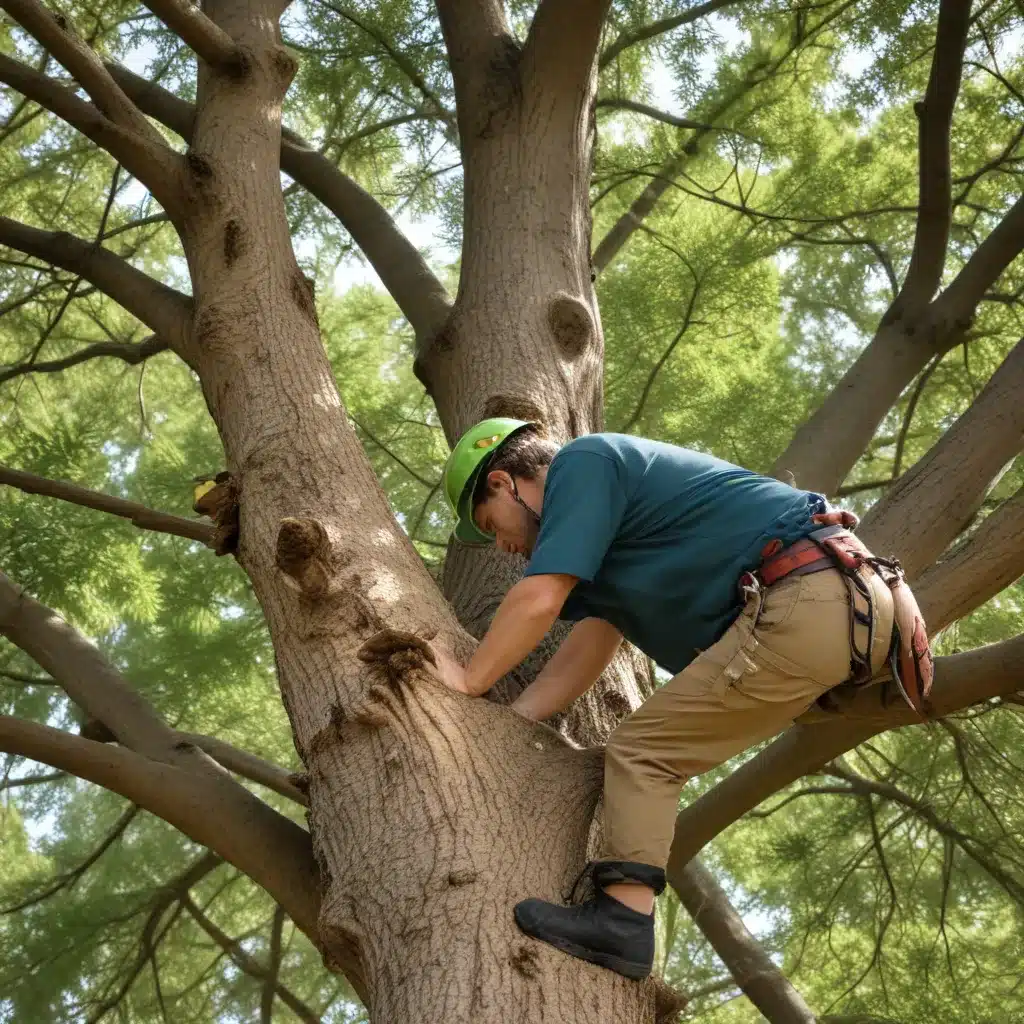
Embracing Nature’s Cycles: Effective Tree Tending Techniques
Horticulture and arboriculture are dynamic fields that require a deep understanding of the natural rhythms and processes governing tree health and growth. As a tree care specialist with TriCounty Tree Care, I’m privileged to share insights on navigating the intricate dance between humans and the botanical world. From seasonal considerations to holistic management strategies, mastering the art of tree tending unlocks a pathway to vibrant, resilient landscapes.
Seasonal Considerations
Understanding Tree Cycles
Trees exhibit remarkable adaptability, synchronizing their life cycles with the ever-changing seasons. During the warmer months, they channel energy into foliar development, photosynthesis, and root growth. As temperatures cool, deciduous species shed their leaves, enter a state of dormancy, and redirect resources inward to protect sensitive tissues. Comprehending these cyclic patterns is essential for tailoring maintenance practices.
Adapting Techniques to Seasonal Changes
Prudent tree care involves aligning interventions with the tree’s natural progression. For instance, pruning is best undertaken during the dormant season when the risk of disease and pest infestations is lower. Conversely, fertilization is optimally timed for early spring, when the tree’s vascular system awakens and can readily absorb and distribute essential nutrients. By respecting these seasonal cues, arborists can minimize stress and promote robust, healthier specimens.
Timing Pruning and Maintenance
The window for conducting arboricultural activities varies by climate and species. In temperate regions, the dormant period typically extends from late fall to early spring. This is the prime time for structural pruning, crown thinning, and other corrective measures. Conversely, emergency pruning to address immediate hazards can be performed year-round as needed. Maintaining vigilance and adapting techniques to seasonal shifts is a hallmark of skilled tree care.
Pruning Strategies
Proper Pruning Techniques
Effective pruning is both an art and a science, requiring a nuanced understanding of tree biology and growth patterns. Arborists must exercise caution when making cuts, ensuring they are positioned just beyond the branch collar to encourage rapid callus formation and prevent the entry of pathogens. Techniques like thinning, reduction, and raising the canopy selectively remove branches to enhance structure, airflow, and light penetration.
Balancing Tree Health and Aesthetics
While appearance is often a primary concern for homeowners, a skilled arborist recognizes that preserving the tree’s overall health must take precedence. Excessive or improper pruning can disrupt a tree’s delicate physiological balance, rendering it vulnerable to disease, pests, and environmental stresses. By striking a careful balance between aesthetics and biology, tree care specialists can achieve both visual appeal and long-term vitality.
Addressing Common Issues
Trees face a myriad of challenges, from structural defects and included bark to suckers and water sprouts. Adept arborists diagnose these problems and apply targeted pruning strategies to mitigate risks and promote resilience. For example, the judicious removal of competing leaders can correct codominant stems, while thinning overcrowded canopies enhances airflow and light penetration.
Soil and Nutrient Management
Assessing Soil Conditions
The foundation of a healthy, thriving tree lies in the quality of its growing medium. Arborists conduct comprehensive soil tests to evaluate factors like pH, nutrient levels, and soil texture. This analysis informs customized strategies for amending deficiencies and optimizing the soil environment to support robust root development and overall vigor.
Fertilizing for Optimal Growth
Judicious fertilization can be a powerful tool in the tree care arsenal, but it requires a nuanced approach. Arborists formulate specialized nutrient blends tailored to the specific needs of each tree species, applying them at the appropriate times to coincide with the plant’s natural growth cycles. This targeted approach ensures efficient uptake and utilization of essential elements like nitrogen, phosphorus, and potassium.
Mitigating Soil Compaction
Soil compaction is a common issue that can severely impede a tree’s ability to thrive. Heavy foot traffic, construction activities, and even excessive lawn mowing can compact the soil, restricting the movement of air, water, and essential nutrients. Tree care professionals employ techniques like vertical mulching, aeration, and the strategic placement of structural soil to alleviate compaction and promote a healthy, porous growing medium.
Holistic Tree Care
Integrated Pest Management
Maintaining the overall health and resilience of a tree is the best defense against pests and pathogens. Arborists employ Integrated Pest Management (IPM) strategies, which combine cultural, mechanical, and, when necessary, targeted chemical controls to address specific issues. This holistic approach minimizes the use of harmful pesticides while promoting the tree’s natural defenses.
Promoting Biodiversity
Trees are not solitary entities but rather integral components of a vibrant, interconnected ecosystem. By incorporating native species and fostering a diverse plant community, arborists can enhance the overall ecological value of the landscape. This approach supports a wide range of beneficial organisms, from pollinators to wildlife, strengthening the tree’s resilience and adaptability.
Ensuring Long-term Sustainability
Sustainable tree care requires a long-term, proactive mindset. Arborists work closely with clients to develop comprehensive management plans that account for the unique needs of each tree, as well as the broader environmental context. This includes implementing succession planting, strategically replacing aging specimens, and ensuring the continued health and vitality of the urban forest for generations to come.
Embracing Nature’s Cycles: Effective Tree Tending Techniques is a testament to the profound relationship between humans and the botanical world. By aligning our practices with the rhythms of the seasons, employing scientifically sound pruning strategies, and nurturing the soil-plant-environment continuum, we can cultivate resilient, thriving trees that enrich our landscapes and our lives. At TriCounty Tree Care, we are committed to this holistic approach, empowering our clients to be active stewards of the natural world.


